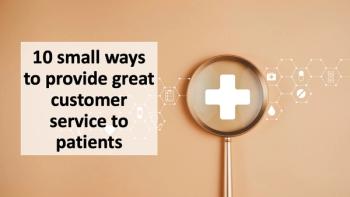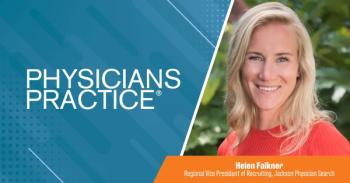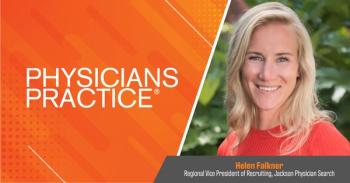
How to beat mid-career blahs before burning out
Mid-career physicians face common dissatisfaction and burnout. These strategies will reignite passion and enhance fulfillment in your medical career.
We have all been to the doctor’s lounge and listened to our colleagues talk about their dissatisfaction with the healthcare profession. I hear doctors state that if they had to do it over again, they wouldn’t choose to be physicians or that they don’t recommend healthcare for their children. These feelings among mid-career physicians are all too common, and this attitude is symptomatic of mid-career blahs. In an ideal world, our work would be completely fulfilling, full of meaning, and intrinsically motivating. But what if they’re not? What if you’re stuck in a career that you once loved, but your heart isn’t in it anymore? This is a common feeling experienced by mid-career physicians, and this blog will offer suggestions for beating back those blahs.
Mid-career malaise is pervasive. This type of discontent is relatively common in middle-aged physicians.
In an ideal world, our professional lives would be completely fulfilling, full of meaning, and intrinsically motivating. But guess what? We don’t live in an ideal or perfect world. It is common to ruminate that you’re stuck in a career that you once loved, but your heart isn’t in it anymore. The calling and idealism we had when we received those M.D. initials after our name has been altered, and we question if we made the right decision.
Start by identifying the root cause of your discontent. Start with pinpointing where it hurts. Is it your practice? Is it the contract you signed to be an employed physician, and have you surrendered your autonomy? Depending on your answer, the solution is different. Of course, it’s not easy to embark on a new career in middle age, when you’ve likely got nonnegotiable commitments such as a mortgage, or school tuition costs for your children. This is the time to reflect on the constraints. When you’re fresh out of training, you can live and work almost anywhere, and yet making a career decision at that time is incredibly daunting. However, in middle age, the options are far fewer. You know you need to work in certain geographic regions, and you must earn a certain amount of money to live and save for retirement.
Make small changes
Look for small changes that can reduce stress and make your practice more enjoyable. For example, if the EMR and data entry are causing you stress because you have difficulty typing, consider using a scribe to do the data entry. Now you can focus on the patient instead of the computer. Also, there are software programs that convert voice to text and will populate the medical record, and do not require typing skills.
Assume you are a mid-career physician, and night and weekend calls are exhausting and take time away from your family. Consider requesting from your partners or human resources if you are an employed physician to give up call on weekends. Of course, this will require adjusting your salary should you give up your call responsibilities.
My take-home message is that even if you cannot change your circumstances, you can make small changes that make practice more palatable.
Focus on learning
One of the biggest causes of middle-aged career malaise is boredom. As physicians, our lives and careers are one long learning curve. When we are at mid-career, we know what we’re doing, we’re good at it, and we are on autopilot. These are the planted seeds to become bored. We miss that “dopamine rush that comes with learning and achievement. Now is the time to ask yourself whether climbing up the ladder of success is the only way. This might be the time for self-reflection and a check to be certain that your ladder is not facing the wrong wall. Maybe you don’t have to climb the ladder if you can do something interesting that will allow you to learn and grow.
If there are no appealing opportunities, identify the pain points in your practice and then convince your colleagues that you’re uniquely equipped to solve them. Ask what challenges colleagues face? Ask what frustrates our patients and our colleagues? Then share what you find easy that others may discover complex or challenging. Think about ways you could use your knowledge and skills to make your practice more efficient and more productive. Remember, don’t wait for someone to tell you what your next job is; go create it.
Use technology to beat back the blahs
Burnout has been an unwelcome companion for physicians, casting its shadow over those dedicated to the profession. However, the specter of
Without a steady stream of new primary care physicians, hospitals will face a widening labor gap at a time when an aging U.S. population is already creating a higher demand for professional caregivers. Solving this issue will require
Leveraging tech to lighten the load
The blahs can be a complex issue that negatively affects the mental health of physicians, but also
Take
In response to these challenges, more practices are turning to emerging technologies such as AI, voice recognition, and virtual assistants. When properly deployed, these tools can enable physicians to quickly and autonomously document care, retrieve clinical data, and create orders using just their voice or an application. In one
However, the efficacy of these technologies hinges on the presence of a fully integrated and standardized IT system. Otherwise, the challenges of inefficient workflows will persist.
To overcome these challenges, health care providers should establish a comprehensive data management framework to outline data ownership, quality standards, and data stewardship responsibilities. This will provide a roadmap for health systems to navigate the complexities of data integration, ensuring that data remains accurate, consistent, and compatible across different systems.
AI in telehealth
Technology can help prevent burnout through telehealth. Today, AI-driven telehealth platforms can empower physicians through remote team collaboration, workload prioritization, and virtual peer support networks. For remote collaboration, AI can provide tools for efficient communication, coordination, and information sharing.
In terms of workload, AI algorithms can help identify and prioritize patient cases, including routine, emergency, and urgent cases.
But while such capabilities are quickly becoming an essential part of the health care landscape, many providers have been slow to adopt AI-driven telehealth platforms. Part of this is due to their simply being unaware of what’s possible. Still, another part of this hesitation stems from the unfounded fears that AI will replace physicians. This is a misconception that is found in other industries where AI is used to improve productivity and reduce administrative burdens.
It is important to make clear to physicians that the goal is not to replace physicians but to make their jobs easier. It’s like having a virtual assistant that has been trained to handle administrative tasks, help patients with access to healthcare, and provide resources for managing stress. This assistance can make a huge difference in a physician’s daily workload, allowing them to perform high-quality work with less effort and ultimately less burnout.
Technology can take pressure off physicians and help to reshape the healthcare landscape. As we navigate the complexities of reducing burnout among physicians, AI and other innovative technologies offer a promising path forward.
To embrace these advances, health care providers must take a comprehensive approach to developing a seamless and integrated health data system. Only then can health organizations realize the full potential of these technologies.
Consider a career change
If these strategies don’t have their desired effect, it could be a sign that you need to take a different path and recalculate your route. When you have tried making small incremental changes and they don’t create enjoyment and fulfillment, then it might be time to seek a new beginning. Switching careers in midlife is going to be stressful. Think deeply and carefully about what you want to pursue if your current position is a source of stress and is leading to burnout. You might consider working with a career coach to help guide you in a new direction.
Challenge your assumptions
Your feelings of professional malaise could also be a sign that your job is not meeting your needs. Maybe your malaise is that you have all your eggs in one basket. It could be that you need to seek life satisfaction outside of work — perhaps through your family, your faith, a charity you support, or a project, hobby, or sport you’re passionate about. True, it’s not the way most ambitious and successful people are conditioned to think. After all, your time is no longer forever, and we recognize at mid-career that we are not immortal.
Do and don’ts principles to remember
Do:
- Identify the problem. Ask yourself: Is it my practice or the hospital environment I’m in?
- Seek meaning by meeting people who benefit from your work or your ideas.
- Consider a lateral move. It’s a good way to take on new challenges and learn.
Don’t:
- Discount the power of making minor changes to your routine and environment.
- Wait around for opportunities. Look for problems you want to solve and then design a new job description.
- Put all your eggs in your professional medical basket. Think about ways to derive satisfaction through your family, faith, or a project or hobby.
Bottom line
Mid-career malaise is a common feeling among physicians. There are solutions available to prevent this situation. At a time when physicians are retiring in large numbers, it is now more important than ever to look at the situation of mid-career malaise. We need to recognize the problem and make efforts to help ourselves and our colleagues stay connected to our profession.
*Pain points: administrative burdens, regulatory compliance, failure of interoperability, reimbursement issues, rising overhead, workforce shortages, technology implementation
Newsletter
Optimize your practice with the Physicians Practice newsletter, offering management pearls, leadership tips, and business strategies tailored for practice administrators and physicians of any specialty.




